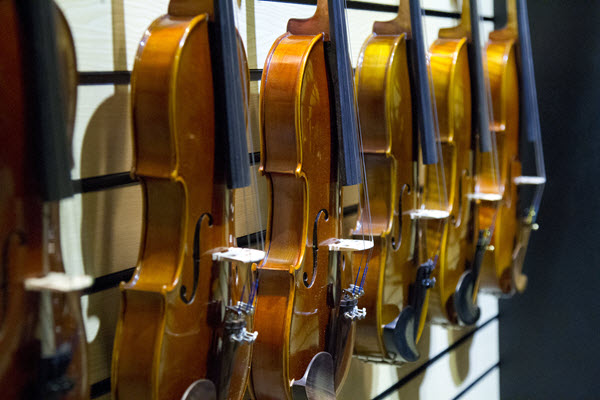7 Ways to Help Band Directors Tackle Strings Education
The skills you have honed to be a successful band director and performer can be applied to tackle strings education.
Even the most accomplished band directors can feel a bit out of their league when teaching strings for the first time. Both Dean Westman, performing arts department chair and orchestra director at Avon (Indiana) High School, and Glenn Fugett, director of bands and orchestras at the Nashville School of the Arts, remember having an uneasy feeling when they were asked to create new orchestras at their respective schools. However, both successfully extended their achievements in band to build extraordinary strings programs.
Dr. Paula Krupiczewicz, an accomplished viola player who has performed with artists such as Placido Domingo, Joshua Bell and Sir James Galway, started from the beginning when she was asked to teach orchestra. At the time, she didn’t have an education background but instead leveraged her talents as a musician to advance students’ skills. Now Krupiczewicz has spent more than 10 years as the orchestra director at North Cobb High School in Kennesaw, Georgia.
Westman, Fugett and Krupiczewicz share their tips for teaching strings with success.
1. Surround Yourself with Mentors

Find a mentor, whether a private lesson teacher or an orchestra director who also started with a band background, and “start picking their brains,” Westman says.
Westman launched the Avon orchestra program in 2007 with just 40 6th-grade beginners. Since then, it has grown to more than 600 students in grades 6 to 12. In 2018, the symphony orchestra won its first Indiana State School Music Association Concert Orchestra Championship, and Westman was inducted into the Bands of America Hall of Fame.
In 2015, when Fugett began teaching strings at the Nashville School of the Arts, he turned to Westman for advice. “Find somebody you can reach out to as a mentor, somebody who speaks your language, who you can hang out with and talk [to], preferably somebody who has done this,” says Fugett who spent the previous 29 years developing successful band programs at two Texas schools — Westlake High School in Austin and Legacy High School in Mansfield.
2. Take Lessons
Acquire a fundamental understanding of string instruments by taking lessons, which will also foster an appreciation for the difficulty of learning how to make a great sound, Westman says. He took violin lessons years ago with his daughter when she was in elementary school to observe the teaching method while learning as a beginner himself.
“Going through that process was a game changer for me to have the most basic level of understanding,” he says.
3. Start with the Basics

Last summer, when Krupiczewicz taught a symposium to band teachers, many of them said they were told they would have to teach string instruments in the fall. Krupiczewicz, who regularly performs with the Georgia Symphony Orchestra, set them at ease.
Producing the right tone is a big challenge for students, Krupiczewicz observes, and the right sound starts with instrument setup and hand position. “I tell my students, ‘It’s like pulling water out of the well; pull the sound from the bottom of your instrument,'” she says. “It’s a happy medium of bow weight, bow speed and the left arm pulling down to let the strings vibrate and the instrument resonate to create a rich, warm, big sound.”
4. Do Daily Warmup Exercises
Practice and warmup exercises are key. Fugett suggests using the book “Daily Warm-Ups for String Orchestra” by Michael Allen. The first exercise in the book focuses on tuning, which Fugett uses for the first six weeks. “I use the book to develop sound quality, tuning, articulation and stylistic bowings,” Fugett says.
5. Hire Top Clinician
Bring in the best string players and clinicians to work with students. Guest artists not only help students improve but also inspire teachers to study how the experts rehearse their students.
“To become the best, surround yourself with the best” is an adage that Westman lives by. He says, “Make [your students] as great as you can.”
THE YAMAHA EDUCATOR NEWSLETTER: Join to receive a round-up of our latest articles and programs!
6. Develop the Individual Player
Encourage students to take private lessons and use the competitive All-State process in your area to further develop individual musicians, Fugett suggests. Intensive training for students allows them to become better players. “If they master those etudes, they’re becoming a fine high school player,” he adds.
7. Give Yourself Credit

And finally, remember that band director skills apply to teaching strings. Westman says that he was afraid that students wouldn’t want to join the orchestra because he was a tuba player. He soon realized that they didn’t care what he played; they were all making music together.
Fugett agrees. “If you’re successful as a band director, you’re going to be successful with strings as well. Music is music.”
This article originally appeared in the 2019 V2 issue of Yamaha SupportED. To see more back issues, find out about Yamaha resources for music educators, or sign up to be notified when the next issue is available, click here.

















